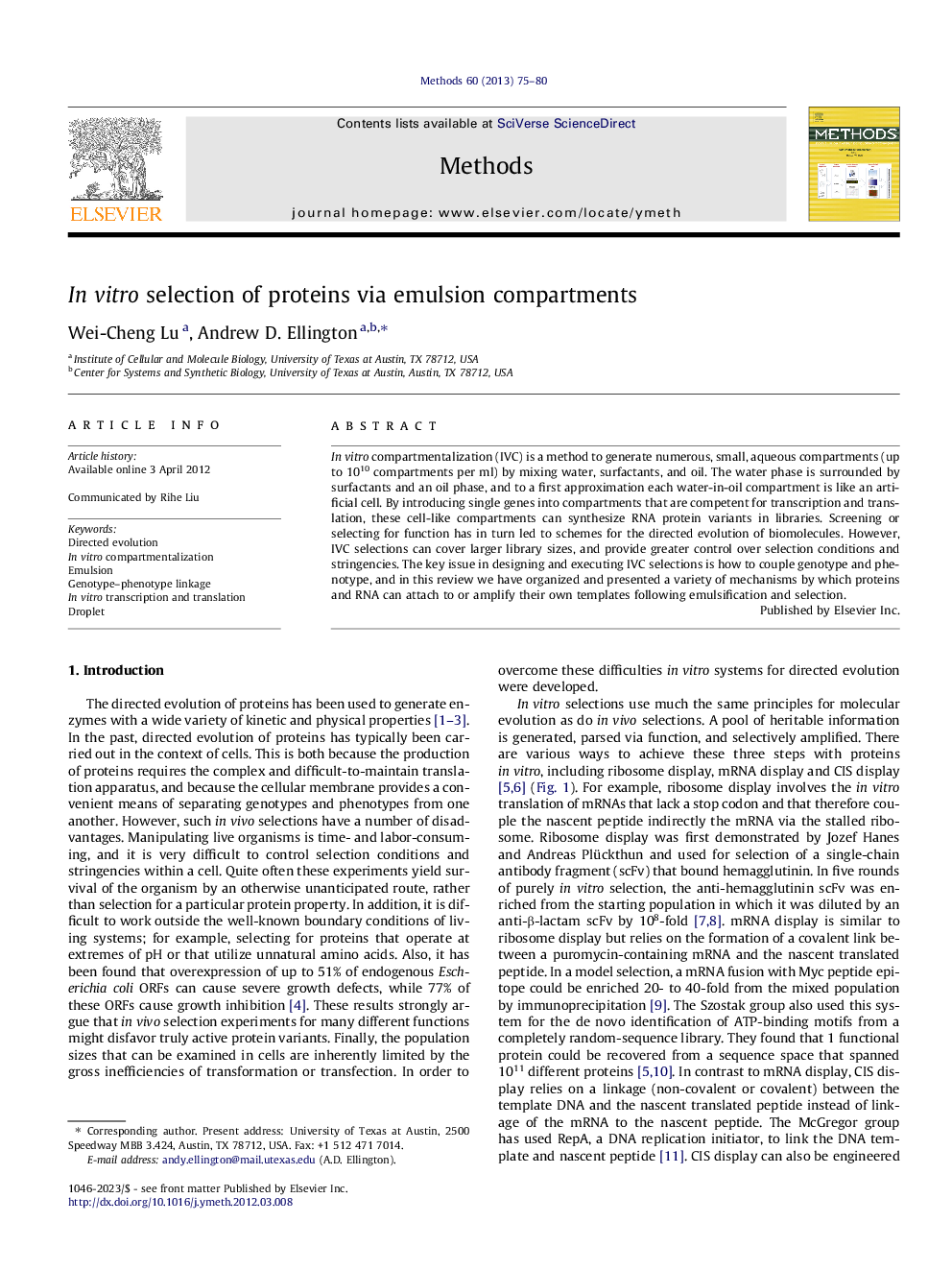| Article ID | Journal | Published Year | Pages | File Type |
|---|---|---|---|---|
| 1993653 | Methods | 2013 | 6 Pages |
In vitro compartmentalization (IVC) is a method to generate numerous, small, aqueous compartments (up to 1010 compartments per ml) by mixing water, surfactants, and oil. The water phase is surrounded by surfactants and an oil phase, and to a first approximation each water-in-oil compartment is like an artificial cell. By introducing single genes into compartments that are competent for transcription and translation, these cell-like compartments can synthesize RNA protein variants in libraries. Screening or selecting for function has in turn led to schemes for the directed evolution of biomolecules. However, IVC selections can cover larger library sizes, and provide greater control over selection conditions and stringencies. The key issue in designing and executing IVC selections is how to couple genotype and phenotype, and in this review we have organized and presented a variety of mechanisms by which proteins and RNA can attach to or amplify their own templates following emulsification and selection.
